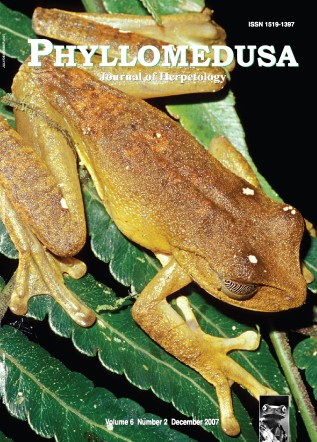Physiology, environmental change, and anuran conservation
DOI:
https://doi.org/10.11606/issn.2316-9079.v6i2p83-103Keywords:
Anura, conservation physiology, environmental change, chytridiomycosis, exotic species, pollutants, habitat fragmentation, global climate changeAbstract
This paper reviews diverse ways in which the emerging discipline of conservation physiology may contribute to the conservation of anuran amphibians. We first present a summary of the goals of conservation physiology. Then, we review five specific sources of environmental change that are known to affect anurans: introduced pathogens (highlighting the case of chytridiomycosis) and exotic species, pollutants, habitat fragmentation, and global climate change. We discuss these types of environmental change in the context of how and why altered environments may become stressing to anurans and cause population declines. We also discuss synergism among variables that may worsen the effect of environmental alterations, and emphasize the importance of conservation physiology for Brazilian anurans.Downloads
Download data is not yet available.
Downloads
Published
2007-12-01
Issue
Section
Review Article
License
All material originally published in Phyllomedusa belongs to Escola Superior de Agricultura Luiz de Queiroz - Universidade de São Paulo. All contents are under a license of Creative Commons BY-NC-ND.How to Cite
Navas, C. A., & Otani, L. (2007). Physiology, environmental change, and anuran conservation. Phyllomedusa: Journal of Herpetology, 6(2), 83-103. https://doi.org/10.11606/issn.2316-9079.v6i2p83-103



 Impact Factor (JCR): 0.600
Impact Factor (JCR): 0.600 CiteScore: 1.0
CiteScore: 1.0